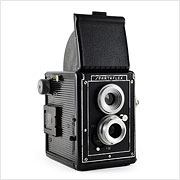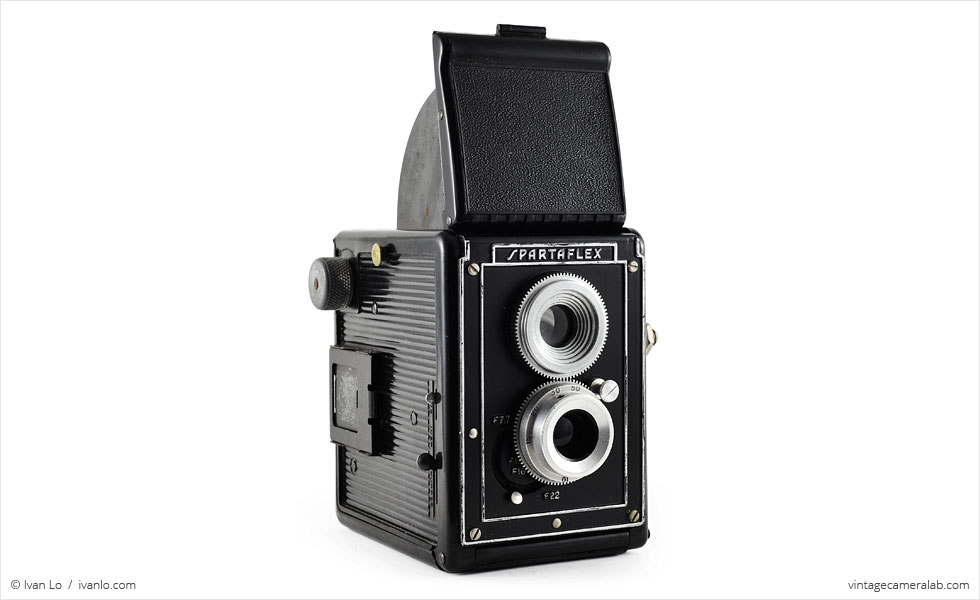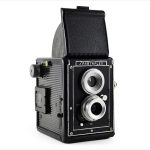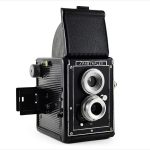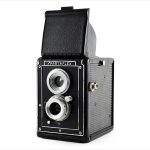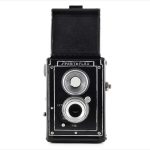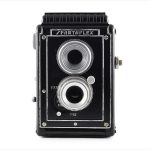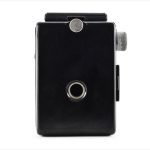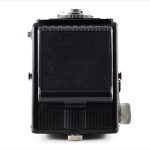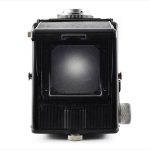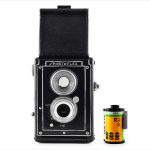Spartus Spartaflex Specifications
| Manufacturer: | Spartus Camera Corp. |
| Origin: | USA |
| Made in: | Chicago, IL, USA |
| Introduced: | 1940 |
| Type: | Twin Lens Reflex |
| Format: | 120 Film |
| Dimensions: | 8 x 12.3 x 11.8 cm |
| 8 x 17.8 x 11.8 cm (viewfinder open) |
Spartus Spartaflex Overview
The Spartus Spartaflex is a medium format twin lens reflex manufactured by the Spartus Camera Corporation of Chicago. Although I found a print ad from the 1940s pricing this camera outfit at an incredulous $47.91 (well over $800 in today’s money), the Spartaflex is by no means a serious answer to the high-quality German TLRs (such as the Rolleicord IId) that had been dominating the market since the late ’20s.
Over the years, Spartus has produced several dual-lens cameras that are considered “pseudo TLRs†(like the Spartus Six Twenty) due to an unfocusable or independently focusing finder lens which essentially makes them over-elaborate box cameras. This particular Spartaflex, however, is a true twin lens reflex because its finder and taking lenses are coupled and therefore focus simultaneously. Both lenses have a focal length of 100mm while the taking lens has four aperture choices: f/7.7, f/11, f/16, and f/22 selectable via a switch at the 7:30 mark of the lens barrel.
The simple rotary shutter only has two settings set by a switch on the user’s right-hand side of the camera: “time,” which is actually Bulb (shutter stays open as long as the shutter button is held down), and “instant” (approximately 1/60 seconds). The shutter button is located underneath the shutter speed selector, just forward of the metal foldout eye-level viewfinder which is under the film advance knob. On the other side of the camera is a screw-on flash gun sync port and on the back, above the red window is a knurled metal knob which, when unwound, opens up the camera for loading and unloading film.
Since Spartus is one of the few brands that I actively collect, I watched eBay auctions for months before finally buying this relatively well-maintained specimen for $12. While it’s not nearly as beautiful or technically brilliant as a Rollei, I think the Spartaflex definitely has a charm of its own. I’m a big fan of its rugged, industrial appearance with lens housings that resemble spare parts for an airplane engine, and knurled metal knobs that wouldn’t be terribly out of place on a lathe, a fitting look considering Chicago’s position as an industrial powerhouse of that era.
Find your very own Spartus Spartaflex on eBay.
McKeown, James M. and Joan C. McKeown’s Price Guide to Antique and Classic Cameras, 2001-2002. (Grantsburg, WI, USA: Centennial Photo Service, 2001), p 618.
